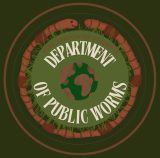Industrial Composting
UCSB is dedicated to reducing waste whenever and wherever possible through sustainable practices. Our program infrastructure processes waste on and off-site, but a large portion of our campus community is unaware of all our composting capabilities. Dept. of Public Worms and our partners are dedicated to waste reduction and educating the community on all of their composting options, such as the ones listed below:
Compost Drop-Off Bins
Anyone at UCSB can use one of our compost drop-off bins for any food or compostable products! They are located at the Arbor, Coral Tree Cafe, the Ellison courtyard, behind the UCen, outside the Library and the Bren courtyard. Most are large solar-powered compacting units with yellow doors, while others look just like our other 4-unit tan trash & recycling bins on campus with an extra space for compost. Compost collected from these receptacles is added to our commercial compost pickup (see Dining Commons and UCen composting below). All foods purchased from Coral Tree Cafe and the Arbor are served in compostable to-go containers including plates, boxes, soup cups, coffee cups, and paper liners. Pre-packaged items like chips, snack bars, and pre-bottled beverages must still go into the recycling or landfill bins however. To find where all compost bins are located on campus check out the UCSB Interactive Map. Click the the “Layers” tab then select the “Compost” option. The yellow rectangles indicate compost bin locations. Click on the highlighted locations to see more information.
UCEN & Dining Services Composting
All food waste generated at the Housing and Residential Services Dining Commons and at the UCen is diverted from the landfill through an industrial composting program. Both departments collect all scraps from the kitchen including fruit & vegetable peels, stems, and even meats and dairy that can’t be processed onsite by Dept. of Public Worms Worm Wranglers. The Dining Commons also composts post-consumer food waste left on dining-ware after meals. Several outlets at the UCen such as Root 217 and Starbucks, have converted to all compostable products like compostable cups, plates, utensils, to-go containers, and of course napkins. Collectively, these two departments compost about 90 tons of food waste every month. The Dept. of Public Worms is not equipped to deal with such large quantities on campus, so all Dining Commons and UCen food waste is picked up once a week by Marborg then taken to a commercial composting facility called Engel and Grey. This will also improve with the addition of Santa Barbara County’s ReSource Center.
Composting in Isla Vista
While the Dept. of Public Worms does not provide composting in Isla Vista specifically, we work very closely with those who do! There are multiple compost site throughout Isla Vista in gardens open to all community members, courtesy of the Isla Vista Compost Collective and the Edible Campus Program. Check out our partners page to learn more!
Family Student Housing Composting Program
Dept. of Public Worms manages the hot compost stalls at both West Campus and Stroke Family Student Housing! Family Student Housing residents are encouraged to drop off their kitchen food waste in the black igloo-shaped bins located near the garden plots at each end of the garden areas. To avoid pests, pathogens and odors, we ask that residents do put meat, dairy, or oils in the black bins. Additionally, Green waste (leaves, grass, weeds, etc.) is compostable on an industrial scale, but our compost stalls are not equipped to handle this type of woody material. We ask residents place green waste in the large, beige Marborg dumpsters OR the large green yard waste bin and it will be separated at the local landfill as part of their mulch program.
Department of Public Worms staff adds the food waste to compost stalls after sorting our any trash or recyclables, turns the piles regularly, and once a pile has finished composting. All finished compost will be placed in a pile outside of the stalls with a “Finished Compost” sign for FSH residents to use! Please follow the guidelines below to make sure you’re helping us make the best soil amendment we can!
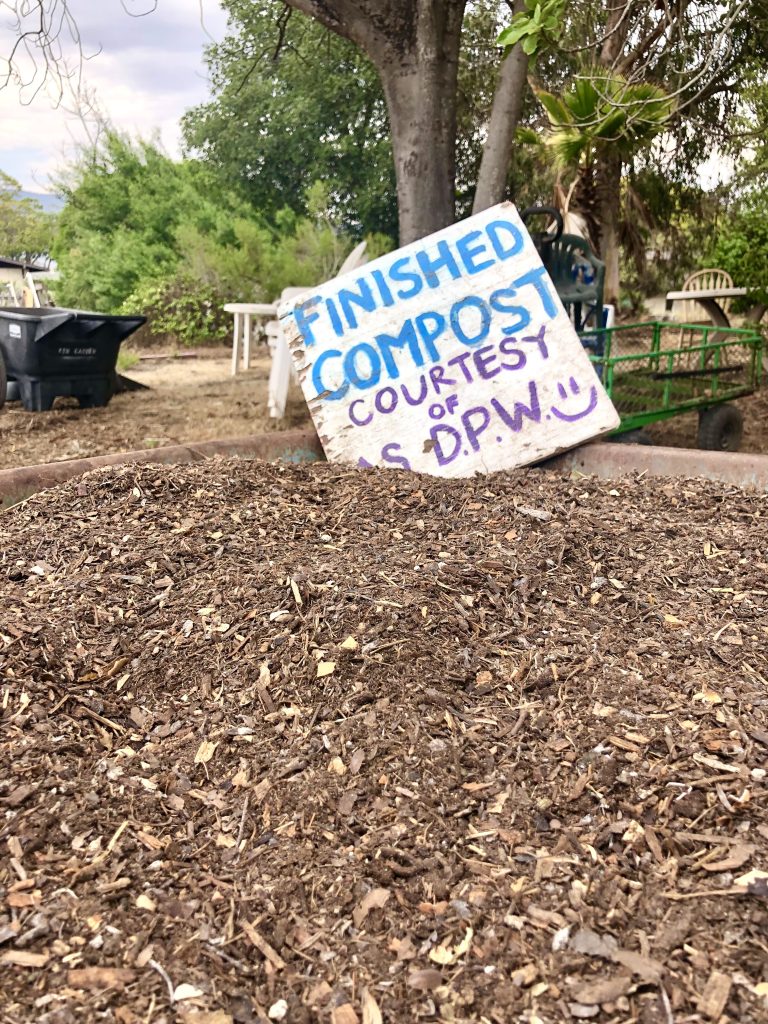
Compost Guidelines
DO Compost:
- Fruit and Vegetable Scraps
- Coffee Grounds and Filter
- Black and Green Tea (bags okay as long as they don’t have metal or plastic)
- Egg Shells
- Grass Clippings
- Legumes, such as beans and tofu
DO NOT Compost:
- Meat, fish, bones, etc.
- Dairy, such as milk, cheese, yogurt, sauces
- Eggs of any kind (except shells)
- Cooked foods
- Grains, such as breads, rice, pasta, cereal, etc.
- Oils
- Compostable Bags
- Pet Waste
In order to reduce pests, protect our workers, and produce the best compost possible, we can only accept certain foods. All trash, recyclables, and yard waste goes into the appropriate brown, blue, and green bins.
We appreciate your understanding and cooperation!
Thank you!
Storke Complex
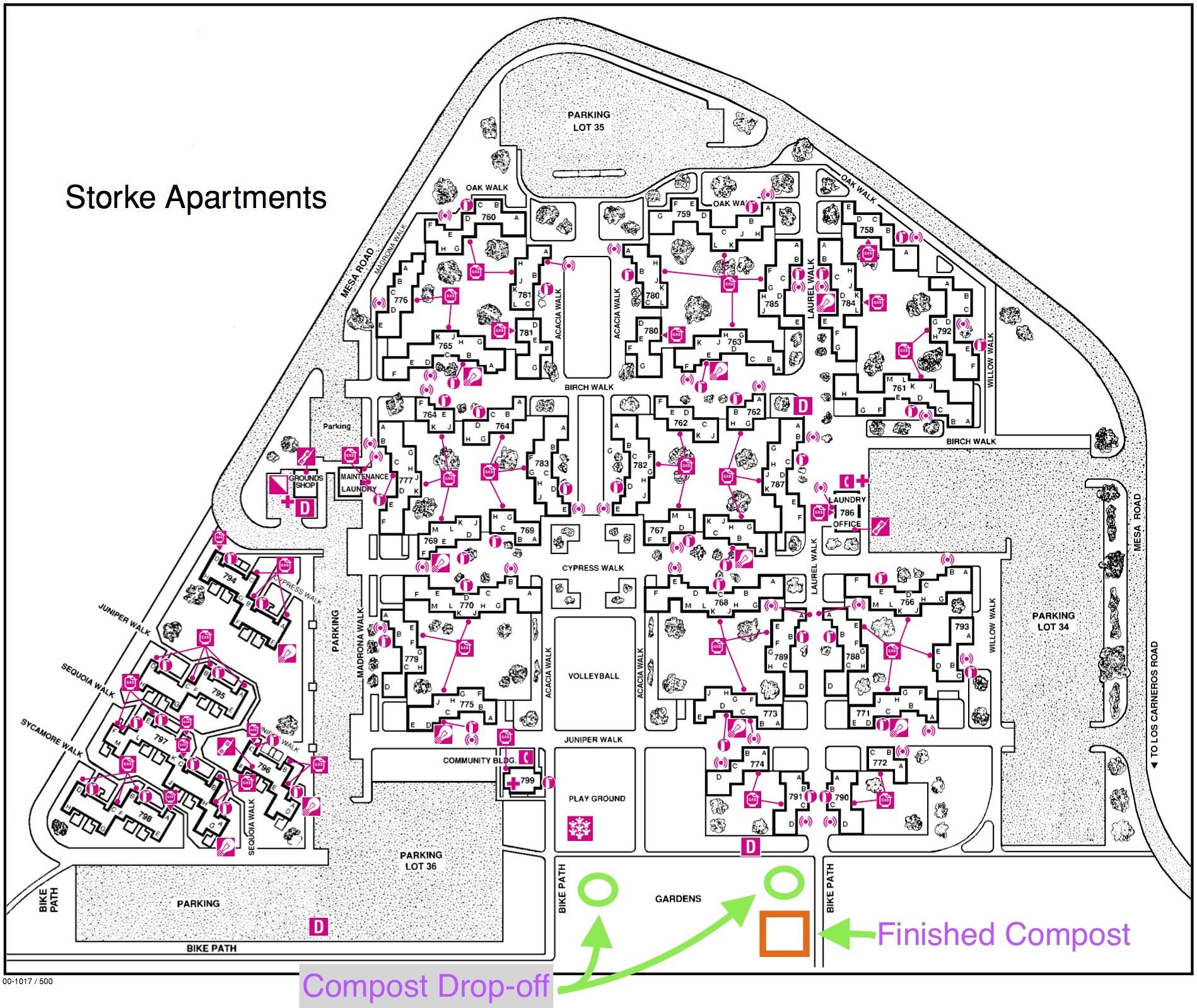
Compost Receptacles are located on each end of the garden area on the south end of the residential complex by the playground and wetland areas. The Finished Compost is located on the South East End of the gardens near the bike path. Please do not take compost unless it is clearly marked as finished!
West Campus
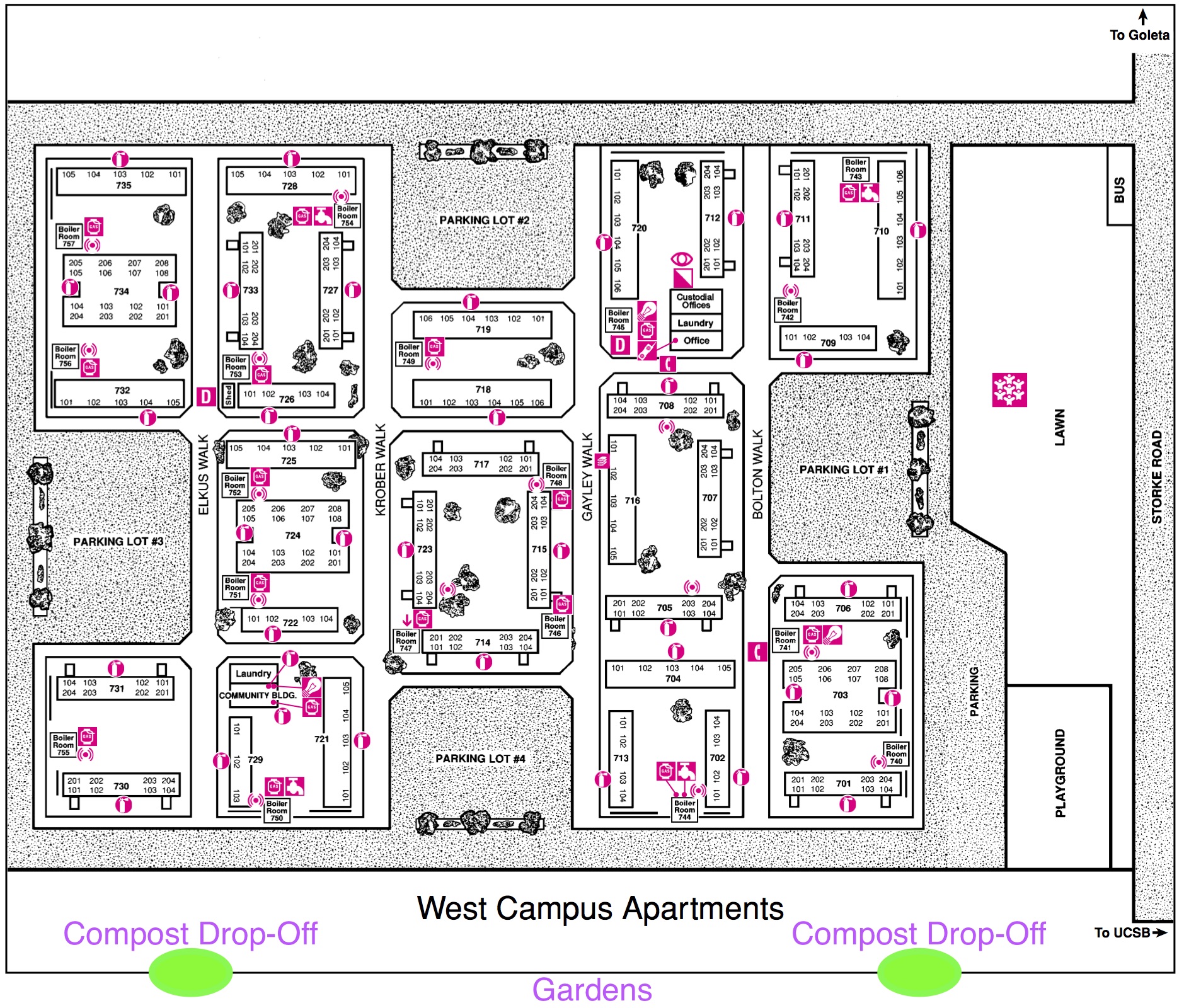
Compost Receptacles are located on each end of the garden area on the south end of the residential complex. The Finished Compost is located on the South, Central End of the gardens near the avocado tree and manure pile close to Slough Road. Please do not take compost unless it is clearly marked as finished!
Dining Commons
The Department of Public Worms goes to De La Guerra, Ortega, and Carillo Dining Commons to pick up a portion of their food scraps to add to our hot compost in the Eucalyptus Grove and to feed our worms in our vermicompost bins.
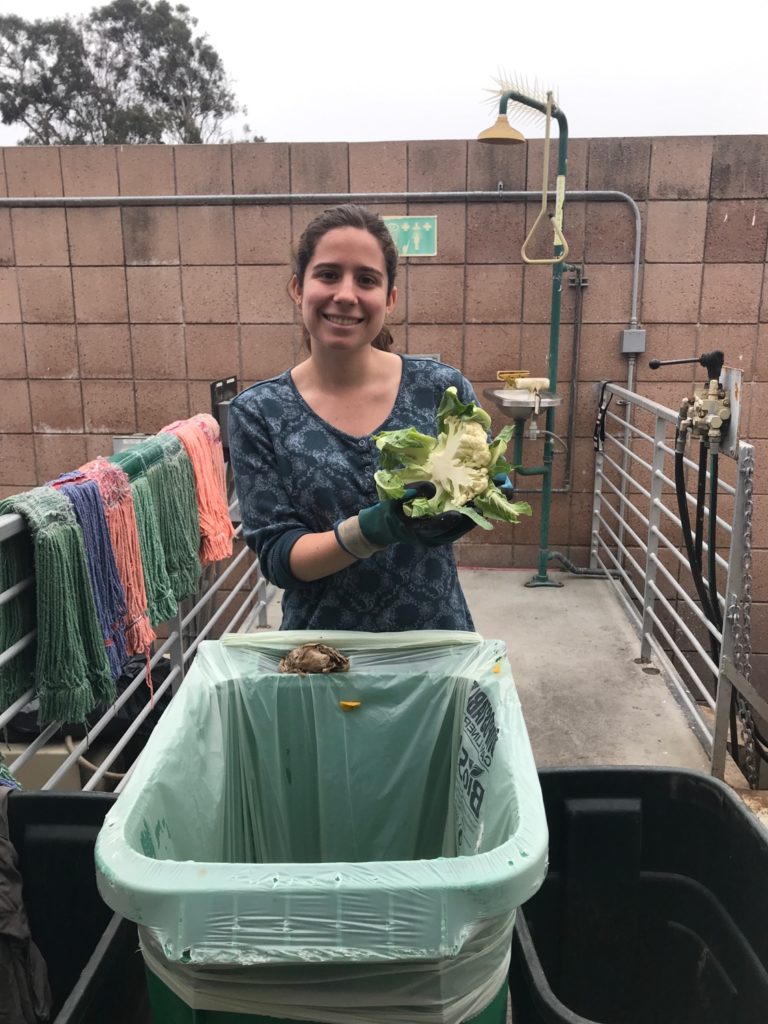
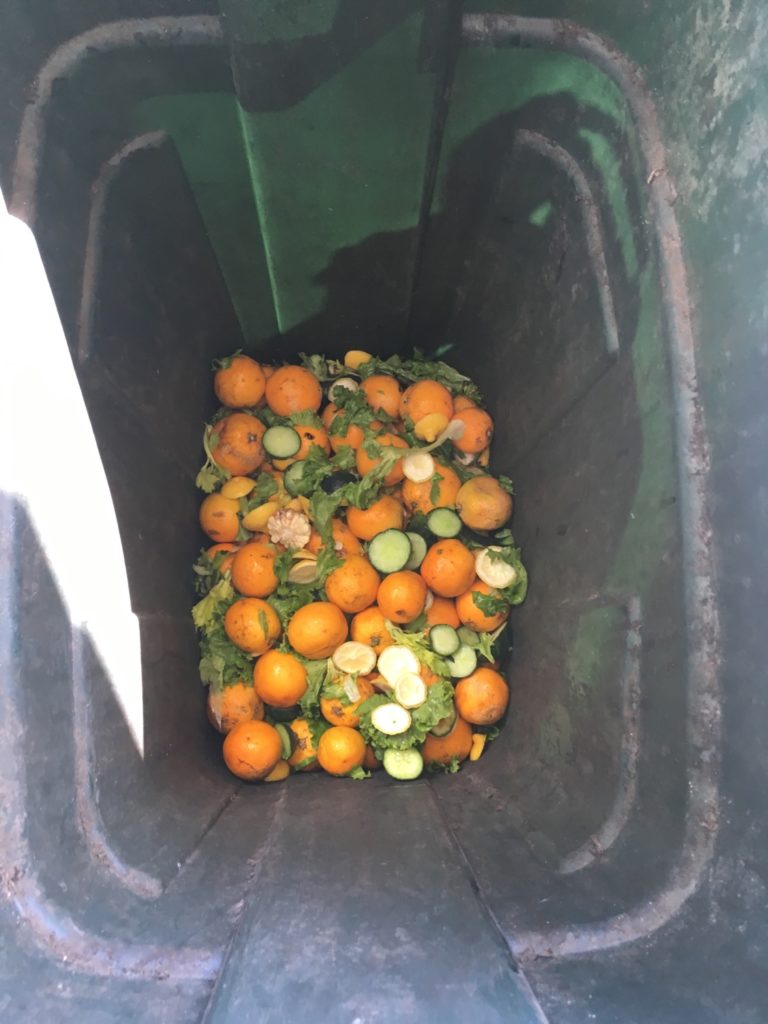
Our Worm Wranglers bring two green bins (like the one you see with food scraps on the right) and sort the fruit and vegetable scraps into hot compost food and worm food since worms are pickier eaters. After they go to the three Dining Commons, they add the food scraps along with a carbon source to the designated compost.
